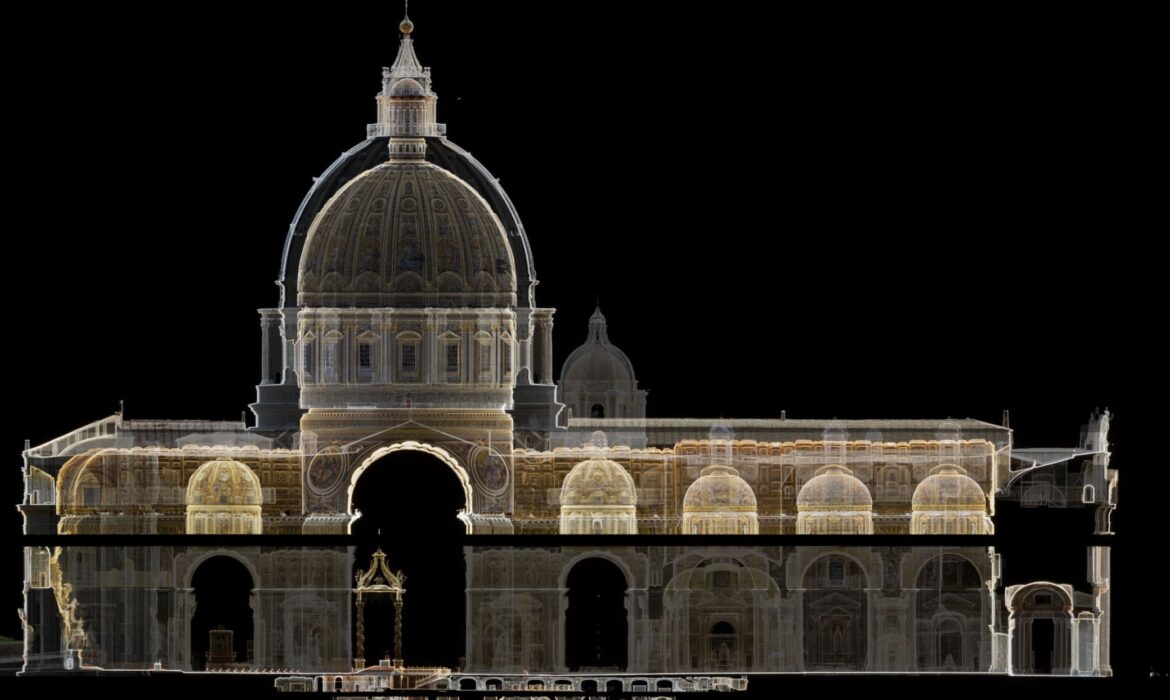Microsoft brings us a new experience for those who wish to delve into history in a whole new way
To explore everything, even the hidden-most corners of Saint Peter’s Basilica, down to the smallest detail. Even that which is not visible to the human eye. It is an unprecedented project that Microsoft developed on the eve of the Jubilee, initiated by Cardinal Mauro Gambetti, the archpriest of the Basilica and President of the Fabric of Saint Peter’s. This is a project that relies on artificial intelligence to create a digital twin of the Basilica, which will allow anyone at any time to enjoy an “original” visit that gives even greater “accessibility” to the spaces than an in-person visit.
This initiative, which may be accessed on the website virtual.basilicasanpietro.va, is the product of a two-year effort that involved international-level professionals as well as experts and scholars from the Fabric of Saint Peter’s. «We succeeded in structuring an information system for the Fabric, to put Enterprise Resource Planning (Erp) at the service of the Offices and to begin a process to computerise the management of documents, archives and human resources – explained Cardinal Gambetti. Furthermore, we took the first step towards Building information modelling (Bim) of the Basilica. With the purpose of encouraging the experience of Saint Peter’s, we created platforms and apps to offer services to the pilgrims and visitors. Relying on multimedia languages, artificial intelligence and a programme of training courses, the meanings conserved by the monumental complex have been made easier to understand. Towards this end, the effort involved using digital technology to decode, for the people of today, the mix of history, art and spirituality that make the Basilica truly unique».
The creation of the digital twin involved using drones, cameras and lasers to shoot 400,000 high-resolution images in three weeks, with millimetric precision: the large quantity of data collected by the French Iconem photogrammetry team was then processed by Microsoft’s AI for Good Lab to improve the visualisation of the Basilica’s interiors and exteriors.
« Artificial intelligence allows us to admire this Basilica in a unique, unprecedented and innovative way », underscores Brad Smith, the vice-chairman and president of Microsoft.
The partnership, which brings together institutions and technological innovation, created a memorable experience for all those who wish to explore the history and meaning of this extraordinary place».
The project also includes two immersive exhibitions, Petros eni and Petros eni octagon, which illustrate key aspects of the evolution of the Basilica across the century. More in detail, Petros eni (which means “Peter is here”), inspired by an inscription in the 1940s excavations which is thought to indicate Saint Peter’s tomb, is curated by Dadada Studios, and merges historical explanations with digital reconstructions of the Basilica. Petros eni octagon, which may be accessed exclusively upon making a reservation online, is a guided tour (for a maximum of 60 people per session, lasting 45 minutes), features five sections: art and architecture (dedicated to the Basilica’s artistic and architectural wonders); historic moments (regarding the major historical events and how they influenced the development of its construction); religious significance (the role of the Basilica in the Catholic faith and its spiritual importance); technological preservation (the innovative tools used for digital conservation, including the advanced techniques for data collection, 3D modelling and artificial intelligence); cultural impact (the cultural influence of the Basilica across the centuries and its importance at the global level).
Digitisation is more than a cultural tool. Artificial intelligence made it possible to discover and map the Basilica’s structural vulnerabilities, such as cracks and missing mosaic pieces, essential information for future conservation efforts. Last but not least, in January 2025, the project will expand its digital involvement with the launch of a new educational experience on Minecraft. The interactive platform will allow the players to explore a virtual version of Saint Peter’s Basilica.
On the cover: AI generated image_x-ray St. Peter’s Basilica


















